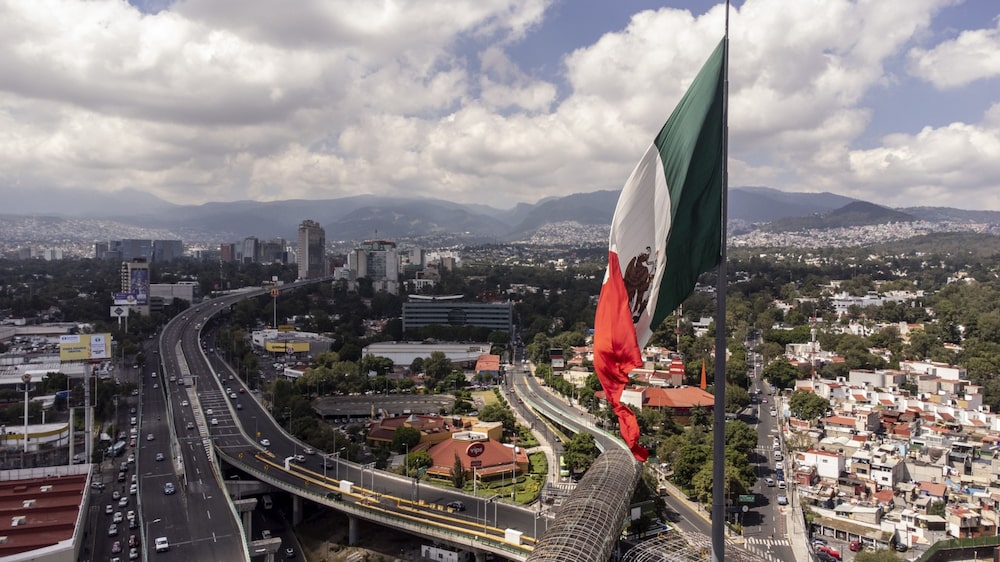Bloomberg — Mexico City’s bars have become unexpected stars on the world stage.
The capital city took four spots on the World’s 50 Best Bars list — including three of the top 15, more than any other city except Barcelona. Some might have been surprised, but Mexico City’s bar owners and managers saw it coming. After all, this world-class bar scene wasn’t built in a day — more like a decade.
Mexico’s singular agave spirits and regional ingredients are the foundation of its bartenders’ success. There’s also the spillover business from the city’s restaurants, which have become international culinary destinations in their own right. The pandemic, however, was what brought an international spotlight.
The country’s lax Covid-19 restrictions during the height of the pandemic attracted thirsty and well-heeled customers. When many cocktail bars closed, Mexico City’s stayed open.

“It helped that a lot of tourism came to Mexico,” said Rodrigo Urraca, co-owner of Handshake Speakeasy, which came in at No. 11 on the list put together by a group that has been publishing rankings for 20 years. The Art Deco-style bar, which doesn’t have a sign outside, is the size of a living room: small and intimate, with dark wood panels and plush seating. The friendly staff makes you feel not like a guest but a member of the clubhouse.
The fact that Mexico never required Covid tests or quarantine periods made all the difference, said Walter Meyenberg, who owns Hanky Panky, which took spot No. 13. The bar is located at the back of a Mexican fonda — a restaurant serving traditional fare — and has a rustic chic design with a bison head fixed to a wall of wood panels and light fixtures that suggest a cabin.

While other cities were under lockdown, with bars and restaurants closed, Mexico City’s bartenders invited their colleagues from Europe and Asia to come work with them, sharing techniques and tips. Bartenders came from The Clumsies in Athens, El Copitas in St. Petersburg, Paradiso in Barcelona, 1930 in Milan and PCO of India — giving those top mixologists exposure to the Mexico City establishments.
Meanwhile, Meyenberg and his friends made stops at top bars across Europe on their way to London in 2021 for that year’s World’s 50 Best Bars ceremony. Now, influences from all that globe-trotting are on display at Hanky Panky. The current menu, titled Passport, is a kind of travel log, Meyenberg said. Its drinks are inspired by Colombia, Spain, Italy, Greece, the US, the UK, Norway, India and Russia. The drinks often include tequila, mezcal and — in the case of the Oslo-inspired Gulrot cocktail — the lesser-known sotol spirit.
At Licoreria Limantour, Mexico City’s first craft cocktail bar, international classics share the stage with its own trademarks. The bar that ranks No. 4 on the global list this year was created to “shed the stigma and stereotype associated with Mexico,” bar manager Jose Luis Leon said. That means no watermelon margaritas. Instead, Limantour’s current seasonal menu features drinks made with preserves by Suculenta, a small-batch producer that gathers fruits and vegetables from all over the state of Oaxaca, including a fat-washed tequila-and-peanut-butter cocktail.
Many bars feature unique, local ingredients. There’s a vast range of artisanal mezcal and tequila, as well as spirits less known outside the country like the agave-derived bacanoras or raicillas; sotol, which is made from an agave-like shrub known as desert spoon; or charanda, a rhum agricole.
Then there are sophisticated versions of popular drinks. At Handshake, the clarified piña colada is unlike any version of the tropical drink you’ve ever had. Dutch bar director Eric van Beek uses Torres 15 brandy instead of rum and infuses the alcohol with coconut cream and coconut oil. Like all of Handshake’s cocktails, it takes from 24 to 48 hours to prepare.
Cafe de Nadie, a notable bar that didn’t make the global list, sources some ingredients from the chinampas, artificial islands in the canals of ancient Xochimilco in the south of the city. The bar uses a chinampa-grown fig leaf in Can I Kick It?, a cocktail made with Don Julio tequila and Tio Pepe sherry. Its martinis are made with pickled carrots and beets from the chinampas.
Although for locals the cost of living is becoming ever-more untenable, wealthy tourists find prices in the country a relative bargain. Cocktails at high-end bars usually run 200 pesos (around $10) or more. For reference, 1.6 million workers in Mexico City — more than one third of the workforce — made no more than 173 pesos a day between April and June, according to a survey by the country’s statistics agency.
Apartment rents rose in the trendy Condesa and Roma neighborhoods by 32.1% and 6.4%, respectively, between January and June, according to a report from real estate marketplace Propiedades.com. The median monthly rent in Condesa rose to 35,000 pesos while Roma’s reached 22,000 pesos, according to the report.
Yet for these world-class bars, and many other businesses that depend on tourism, the visitors kept them afloat. “What would I have done without foreigners in the pandemic?” Meyenberg says rhetorically, adding that many bars would have closed without them.
For Mexico City’s bars, the tourist resurgence is a “wonderful phenomenon,” Meyenberg said. Just don’t bring the Spring Breakers, he adds.
Read more on Bloomberg.com


